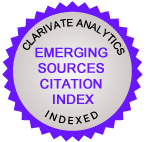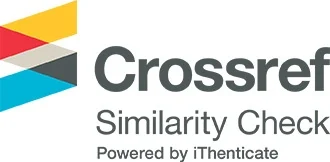State, freedom, and ideology: digital narratives of the new right for Latin America
-
Ramon Ramirez Ibarra
 ramon.ramirezib@uanl.edu.mx
ramon.ramirezib@uanl.edu.mx
Downloads
DOI:
https://doi.org/10.56754/0718-4867.2023.3017Abstract
Today, one of the most strident phenomena of right-wing political ideology in Latin America comes from digital communication. Dozens of "influencers" and organizations, through aggressive narratives, threaten the users of the digital village to abandon any expression of solidarity, community, and collective, qualifying as a totalitarian enemy a great demon suppressor of freedom: the state and its institutions. The narrative thematization of ideological propaganda in videos and websites of organizations linked to or tending to libertarianism will be the object of analysis in terms of a semiotics of communication. The latter is understood as a process of producing meaning or semiosis rather than a mere exchange of messages between elements.
This observation provides a way of locating strategies based on the production of meanings coordinated by symbolic exchanges that are relevant for the analysis of ideologies with a hegemonic aspiration to ideals of individuality, autonomy, transparency, and absolute logical and rational choice that presuppose themselves as irrefutable. Through the analysis of the persuasive strategies of digital communication in some of these narratives, it is possible to recognize the particularities of messages embedded in networks of monetary financing, lobbying, and audiovisual influence, whose aim is to position political agendas on a dual Manichean level, on the one hand, the demonization of the state and on the other, a glorification of US capitalism as the fullest form of any ethical and economic development in history.
Palabras Clave
Althusser, L. (1988). Ideología y aparatos ideológicos del Estado. Nueva Visión.
Barthes, R. (1993). La aventura semiológica. Paidós.
BBC News Mundo (28 de mayo, 2019). Caso Nxivm: las conexiones de la secta sexual con las élites de México. BBC News Mundo. https://www.bbc.com/mundo/noticias-america-latina-48428521
Bermejo, J. (2005). Hombre y pensamiento. El giro narrativo en ciencias sociales y humanas. Laberinto.
Eco, U. (1987). Lector in fábula. La cooperación interpretativa en el texto narrativo. Lumen.
Everaert-Desmedt, N. (1984). La tematización publicitaria. Semiosis, (12-13), 213-259. Centro de Investigaciones Lingüístico-Literarias, Universidad Veracruzana.
Fabbri, P. (2004). El giro semiótico. Gedisa.
Fedoseiv, P. (1982). El arte de la polémica. Cartago.
Foucault, M. (1996). La verdad y las formas jurídicas. Gedisa.
Gandelman, C. & Feller, A. (1987). Las posturas de frontal, perdil y tres cuartos en las representaciones de Lenin, Mao Tze, Fidel Castro y Che Guevara. Semiosis, (18), 91-129. Centro de Investigaciones Lingüístico-Literarias, Universidad Veracruzana.
Gramsci, A. (1978). Antología. Siglo XXI.
Greimas, A. (1987). Semántica estructural. Gredos.
Grize, J. B. (1982). De la Logique á l´Argumentation. Libraire Droz.
Haidar, J. (2002). La refutación argumentativa y el componente patémico: modelos analíticos. Iztapalapa: Revista de Ciencias Cociales y Humanidades, (53), 33-50. https://dialnet.unirioja.es/descarga/articulo/6114109.pdf
Kopperschmidt, J. (1985). An Analysis of argumentation. En Van-Dijk, T. A., Handbook of Discourse Analysis, vol.2 (pp. 159-168). Academic Press.
Lotman, I. M. (1996). La semiosfera I. Semiótica de la cultura y del texto. Cátedra.
Mbembe, A. (2011). Necropolítica, seguido de Sobre el gobierno privado indirecto. Melusina.
Nöth, W. (2005). La autorreferencia en los medios. En Espinosa-Vera, P., Semiótica de los Mass Media (pp. 39-51). Oceáno.
Pierce, C. S. (1988). Escritos lógicos. Alianza.
Ramírez-Ibarra, R. (2021). La ciudad en paisaje. El caso de los viajeros urbanos en la cultura digital. En Sousa-González, E. & Ramírez-Ibarra, R. (Coords.), Urbe y acción. Desafíos del espacio público metropolitano contemporáneo (pp. 43-84). Río Subterráneo.
Rass, S. (2021). Judging the quality of (fake) news on the internet. Mind & Society, 20, 129-133. https://doi.org/10.1007/s11299-020-00249-x
Robles, J., Guevara, J., Casas-Mas, B., & Gómez, D. (2022). Cuando la negatividad es el combustible. Bots y polarización política en el debate del COVID-19. Comunicar, 71, 63-75. https://doi.org/10.3916/C71-2022-05
Salas-Porras, A. (2018). Conocimiento y poder. Las ideas, los expertos y los centros de pensamiento. Akal.
Salzman, N. (1 de enero, 2021). NXIVM. http://www.nxivm.com/personal_1024.php
Saussure, F. (1982). Curso de lingüística general. Alianza editorial.
Shermer, M. (1997). The unlikeliest cult in History. Skeptic, 2(2), 74-81. https://www.2think.org/02_2_she.shtml
Stefanoni, P. (2021). ¿La rebeldía se volvió de derecha? Siglo XXI.
Van-Dijk, T. A. (1998). Ideology. A Multidisciplinary Approach. Sage Publications Ltd.
Walker, J. (1999). The Ayn Rand Cult. Open Court Publishing.
Downloads
Published
How to Cite
Issue
Section
License
Copyright (c) 2023 Ramon Ramirez Ibarra

This work is licensed under a Creative Commons Attribution 4.0 International License.
- Proposed policy to offer Open Access Journals
Authors who publish with this journal agree to the following terms:
a) Authors retain copyright and grant the journal right of first publication with the work simultaneously licensed under a Creative Commons Attribution Attribution (CC -BY 4.0) ![]() that allows others to share the work with an acknowledgement of the work's authorship and initial publication in this journal.
that allows others to share the work with an acknowledgement of the work's authorship and initial publication in this journal.
b) Authors are able to adopt licensing agreements for the non-exclusive distribution of the journal's published version of the work (for example, to post it to an institutional repositories or publish it in a monograph), with an acknowledgement of its initial publication in this journal.
c) Authors are allowed and encouraged to post their work online (For example, in institutional repositories or on their website) prior to and during the submission process, as it can lead to productive exchanges and increase the citation of published work (See The Effect of Open Access).












